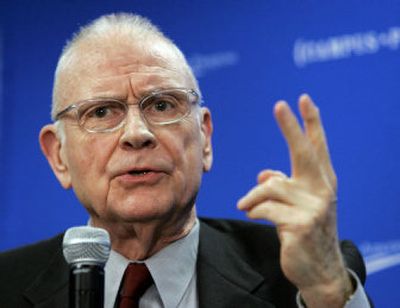Iraq group reaches consensus

WASHINGTON – The Iraq Study Group, which wrapped up eight months of deliberations Wednesday, has reached a consensus and will call for a major withdrawal of U.S. forces from Iraq, shifting the U.S. role from combat to support and advising, according to a source familiar with the deliberations.
But the recommendation includes a series of conditions and qualifications that would govern any drawdown of forces, the source said. “It describes a process by which combat brigades could be pulled out, but there wasn’t a specific timetable on it,” he said. The source demanded anonymity because members of the bipartisan panel have been pledged to secrecy until the report is officially issued Dec. 6.
The issue of a timeline for drawing down troops – both a specific date to begin a withdrawal and the pace – had been major points of contention within the panel. The Bush administration has firmly rejected specifying a date for withdrawal, but Democrats have favored setting a timeframe as a way to put pressure on the Iraqi government.
The recommendations in the still-secret report were agreed to after three days of closed-door discussions. The report, which is about 100 pages, will offer a comprehensive look at regional political and security issues as well as the troubled U.S. deployment in Iraq, according to sources close to the panel.
Under the recommendations of the commission, led by former Secretary of State James Baker and former Rep. Lee Hamilton, D-Ind., the emphasis of the U.S. military presence in Iraq would shift from fighting the insurgency and containing sectarian violence to backing up Iraqi security forces dealing with those problems.
This approach would place less emphasis on combat operations and more on logistics, intelligence and training and advising Iraqi units. Also, a large residual combat force would be required to protect all the personnel involved in those operations, and also to provide a security guarantee to the Iraqi government.
Some people knowledgeable about the group’s deliberations said it might be possible in a year or two to halve the U.S. military presence to about 70,000 troops.
The findings dovetail with recommendations being considered by the military’s Joint Chiefs of Staff, who are conducting their own review of Iraq policy. That group is leaning toward an option that involves a brief surge of troops in Iraq, followed by a partial drawdown and a shift from combat operations to training and advising, according to sources familiar with the process. Troops would remain in Iraq for five to 10 years under this option, which is known within the military as “Go Long.”